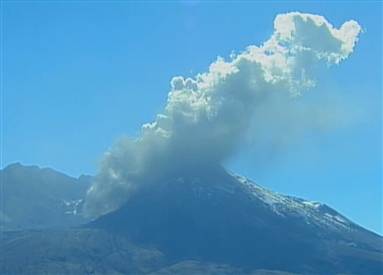Seismic model to figure out internal functioning of Mount St. Helens
 Washington, Feb 20 : Geophysicists have produced a new seismic model for figuring out what’s going on inside Mount St. Helens, North America’s most active volcano.
Washington, Feb 20 : Geophysicists have produced a new seismic model for figuring out what’s going on inside Mount St. Helens, North America’s most active volcano.
The research, led by Gregory P. Waite, an assistant professor of geophysics at Michigan Technological University, would delve into the causes of the earthquakes that accompany the eruption of a volcano, thus helping scientists better assess the hazard of a violent explosion at Mount St. Helens and similar volcanoes.
When a volcano such as Mount St Helens erupts, it can cause a series of shallow, repetitive earthquakes at intervals so regular that they’ve been called “drumbeat earthquakes.”
Until now, scientists generally believed that these earthquakes were caused by the jerky movements of a solid plug of molten rock traveling up from the volcano’s core, a process known as the stick-slip model.
But, the modeling of seismic data collected by Waite and colleagues dispute that explanation.
“The regularity and similarity of the shallow earthquakes seem consistent with a stick-slip model,” said Waite.
Broadband measurements indicated that the energy is concentrated in a short bandwidth—between 0.5 and 2 Hz—and the earthquakes have nearly identical wave forms.
“But this is not typical of a stick-slip event,” said Waite. “Rather, it suggests a source with a net volume change, such as a resonating fluid-filled crack,” he added.
The fluid in the crack most likely is steam, derived from the magma and combined with water vaporized by the heat of the molten rock. A continuous supply of heat and fluid keeps the crack pressurized and the “drumbeats” beating, explained Waite.
“The pressurized crack in our model is filled with steam that could conceivably drive a small explosive eruption if the pattern (of earthquakes) we observe is disturbed,” he said.
Waite’s co-author, Chouet, who also works for the USGS, proposed a similar seismological model for volcanoes in Hawaii, where the lava is much more fluid and flows more easily.
But, this is the first time the model has been applied to volcanoes like Mount St. Helens, with slow-flowing, sticky lava. (ANI)